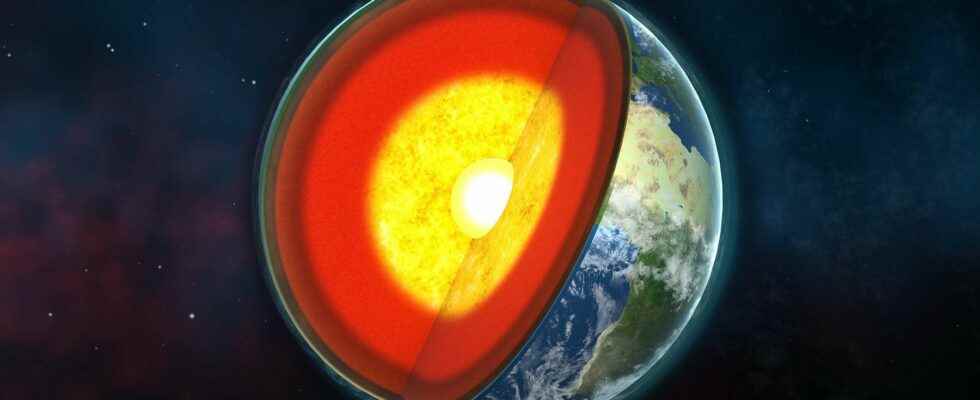Far under our feet are at play essential processes for the earth’s dynamics. However, this dynamic is intimately linked to the nature and composition of the mantle, which is far from homogeneous, as this new study shows.
You will also be interested
[EN VIDÉO] Seismology, the stethoscope that listens to the heart of the Earth “The Earth is opaque but it is transparent to seismic waves” explains Jean-Paul Montagner, researcher at the IPGP (Institut de physique du Globe de Paris), in the preamble to this video. Thanks to it, we dive into the bowels of the Earth, to observe its structure and understand the origin of earthquakes.
What is the structure of coat deep? If it may seem anecdotal, this question is nevertheless crucial for understanding the whole of the Earth’s dynamics, and in particular the convection mantle which is plate tectonics engine. Located more than 2,800 kilometers deep, this zone also influences the volcanism that we observe on the surface, but is also intimately associated with the process responsible for dynamo terrestrial and magnetic field of our planet.
Two large velocity anomalies in the deep mantle
The seismologythanks to the study of seismic waves which cross the globe, makes it possible to image with more and more precision these internal zones of the Earth. In particular, it made it possible to highlight two large structures at the base of the lower mantle. These immense structures, one of which is located under Africa and the other under the Pacific Ocean, correspond to areas of low speed from seismic waves shearing (LLSVP for Large Low-Shear-Velocity Province). These two structures are thus identifiable as anomalies compared to the rest of the lower mantle, whose speed is significantly higher due to the enormous pressure prevailing at this depth. This velocity variation indicates that the two LLSVPs have major differences with the rest of the mantle. However, we do not know exactly what these differences consist of: difference in composition, density, viscositytemperature… The difficulty scientists have in understanding the origin and nature of these two major anomalies comes mainly from the fact that the characteristics of the entire lower mantle are still very poorly constrained.
Why such a strong asymmetry?
However, researchers have been interested in the morphology of these two anomalies to try to understand their dynamics and their evolution over time. The anomaly located under Africa is particularly imposing: it rises 1,300 to 1,800 kilometers above the core-mantle limit, while the anomaly under the Pacific only reaches 500 to 800 kilometers high. The African anomaly is therefore about twice as high as the Pacific anomaly. What is this asymmetry related to? The two structures are however surprisingly opposed, one on each side of the globe.
Some studies suggest that the distribution of these abnormalities is controlled by tectonic processes occurring on the surface, and in particular by the subduction zones. Indeed, the slabs (plunging plates) that penetrate deep into the mantle could disturb the thermal structure at the interface with the core and lead to a cutting of the LLSVPs.
The anomaly under Africa would be less dense than that under the Pacific
In a new study, two researchers from the University of Arizona (USA) carried out numerical simulations to study the evolution of these anomalies according to different parameters. The results, published in Nature Geoscience, show that the height of the anomalies is mainly controlled by the viscosity of the surrounding mantle and by the density of the material composing the anomaly. Their hypothesis is that the African anomaly would have a different composition and in particular a lower density than those of the anomaly under the Pacific, thus explaining the difference in height between the two structures.
This difference is supported by a recent study on the composition of basalts of hot spots located directly above the two LLSVPs, and it shows that the lavas from the sub-African mantle are enriched in materials of continental origin (not very dense) previously subducted during the life cycle of the supercontinent Pangea. That contamination continental was not found in the lava above the Pacific anomaly. This difference suggests that the two anomalies evolved differently over time and that the exchanges with the surrounding mantle were different, the African anomaly having probably integrated a continental component that arrived at depth through subductions.
The vertical extension of the African anomaly brings it “relatively” close to the surface, which could explain the presence of supervolcanoes on the African plate for several hundred million years.
Interested in what you just read?
